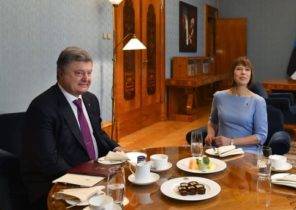
A hundred years ago was created the prototype of the first German tank, code named A7V. Members of the crew had very difficult, said an employee with the tank Museum of the city of münster Ralf Rats (Ralf Raths).
In the middle of the Museum hall this gray colossus is, something resembling an inverted ship, — only front, over the iron cross he sticks out a short gun. This is the A7V tank, the first tank was built in Germany. A hundred years ago, he showed high military officials in Berlin just a few months after the first attack of the British, who already had at its disposal tracked combat vehicles, called them “tanks”. Really effective weapon, the tanks began only in November 1917, and in the hands of the German troops — not only in the years of the Second world war.
A7V presented in münster the Museum is actually just a hoax. Very difficult to imagine how the inside of this seven-meter machine was located almost 20 soldiers. In addition to the Prime crew commander with the rank of Lieutenant, there were twelve gunners, and Batman, the gun commander and gunner. Communications answered the pigeon-Sergeant.
“The conditions inside were horrible,” says Ralph of the Rats. The tank had two engines. “Inside the crew could move, only hunched over — if at all could move. There was overcrowding, the stench and the deafening noise.” Illumination inside the tank was not, and from the engine the temperature rose to 60 degrees.
In the battle of the Somme, which lasted several months, the British, suffering heavy losses, for the first time applied the tanks. It happened on 15 September 1916. In the framework of trench warfare in front of them was the task to overcome the barriers of barbed wire and trenches and destroy enemy machine guns and cannons. In one only the first day of the battle in July — the British lost more than 19 thousand soldiers were killed. “With tanks they managed to avoid further big losses,” — said the Rats. With tanks, according to him, was associated with many technical problems, but from a psychological point of view, their use has become very successful.
“Many German soldiers were shocked seeing the approaching and shot at him steel monster crawler”, says Rats. 30-ton colossus was moving at pedestrian speed, but he seemed unstoppable. “Along the entire front line German soldiers called them “monsters”, “dragons” or “monsters””. In Germany and Austria, generals refrained from comments: scarce metals used for the production of submarines. “Onshore tank defense with the classic guns seemed to them a guarantee of success,” adds Rats.
However, in order not to be in the role of perpetual Laggards, the Germans immediately began development of its own tank. In early 1917, his prototype was presented in Berlin. “However, senior military leadership decided to abandon the mass production of tanks — due to lack of resources and unclear chances of success,” says Rats. The name A7V was reduced and meant “the 7th transportation Department” which was responsible for the development of the first tank.
Until the end of the war he made only 20 new combat vehicles. At the end of October 1917 was built first, but on 21 March 1918 was the first operation, which involved tanks. The case of steel plates mounted on unarmored chassis. This beast weighed 32 tons.
The engines of tanks are often boiled during the battle, they were off the chain with caterpillars, constantly broke the gearbox, but the British fared no better. One tank called the A7V “Mephisto” fell into the crater made by the explosion, and the crew had to abandon him. He fell into the hands of Australian soldiers and in 1919 was taken in Sydney. Now this tank is on display in Brisbane and is considered the only surviving A7V in the world.
The British and French in turn continued to improve their tanks. In November, 1917, nearly 500 British tanks broke through the German defensive lines at the battle of Cambrai. “For the allies tanks were a very important weapon, but they were not wonder weapons that can radically change the course of fighting, says of the Rats. And the Germans soon learned to reflect the tank attack, seized about a hundred of enemy tanks and began to apply them yourself”.






